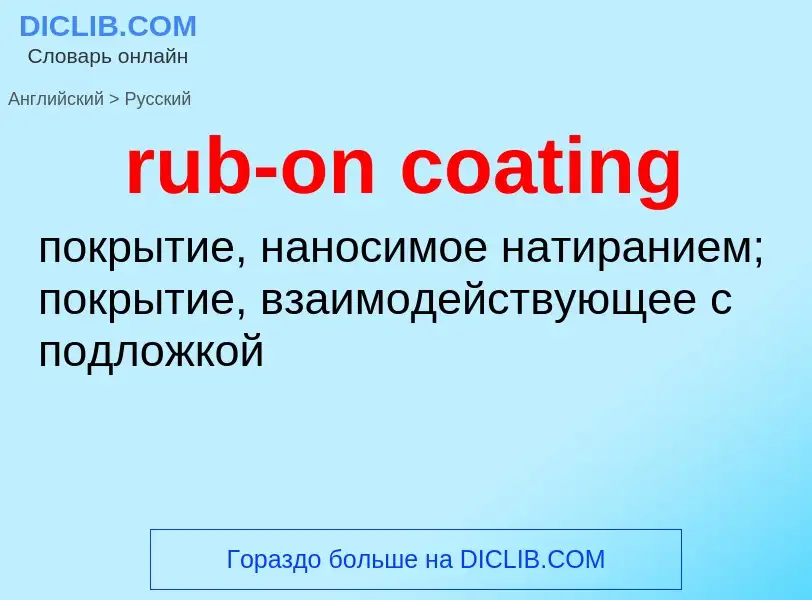Перевод и анализ слов искусственным интеллектом ChatGPT
На этой странице Вы можете получить подробный анализ слова или словосочетания, произведенный с помощью лучшей на сегодняшний день технологии искусственного интеллекта:
- как употребляется слово
- частота употребления
- используется оно чаще в устной или письменной речи
- варианты перевода слова
- примеры употребления (несколько фраз с переводом)
- этимология
rub-on coating - перевод на русский
['kəutiŋ]
общая лексика
оболочка
покров
покрытие
нанесение покрытия
покрывающий слой
облицовка
грунтовка
грунт
шпаклёвка
полив (эмульсии)
обмазка
фотография
эмульсионная сторона (плёнки)
полиграфия
мелование (бумаги)
строительное дело
слой
нефтегазовая промышленность
обшивка (наружная)
существительное
общая лексика
слой (краски и т. п.)
покров
материал для пальто
одёжная ткань
слой (краски и т. п.)
шпаклевка, грунт
специальный термин
покрытие
обмазка
техника
обшивка
общая лексика
металлопокрытие
['kəutid]
общая лексика
покрытый
облицованный
нефтегазовая промышленность
обшитый (досками)
прилагательное
общая лексика
покрытый (чем-л.)
мелованный (о бумаге)
специальный термин
облицованный
общая лексика
защитное покрытие
защитный лакокрасочный слой
строительное дело
защитное покрытие, защитный слой
Определение
Википедия
Action Transfers, also known as rub-on transfers, were an art-based children's pastime that was extremely popular throughout the world from the 1960s to the 1980s. They consisted of a printed cardboard background image and a transparent sheet of coloured dry transfer figures of people, animals, vehicles, weapons, explosions and so on. These transfers were supposed to be applied to the background scene by rubbing the top surface of the transparent sheet with a hard object or stylus; typically, this would mean a ball-point pen or a pencil; the figure would thereby be transferred from its sheet to the background. Since it was not customary to determine exactly where the transfers should be applied, surreal or comic effects could be achieved—whether deliberately or inadvertently—by juxtaposing the transfers and the background inappropriately. It was also possible to apply the transfer figures elsewhere than on the supplied background, and conversely it is quite common to come across finished transfer sets in which the descriptive lettering from the sheets has been applied to the background; an effect not intended by the manufacturer.
A number of different sets were distributed by a wide variety of companies between the late 1960s and the 1980s; these included sets based on popular comics and cartoons (e.g., DC Comics, Marvel Comics, Hanna Barbera, and Disney cartoons), television series and movies (e.g., Star Wars and Battlestar Galactica), as well as original content sets. Since Letraset had a patent monopoly on the dry rub-down transfer process, until the end of the 1970s any transfers supplied with these sets would have been printed by Letraset, firstly at Waterloo Road in London, then later at Ashford in Kent, and finally at their factory in Italy.

